5e258fd5139e4229f57eb1a5f7ce9adc.ppt
- Количество слайдов: 88

Please copy into your notebook what is underlined. SILV 2011 Lighting Technology 101 A basic explanation of the principles of illumination, similarities and differences of LED and conventional lamp based technology, as well as an understanding of the use of color filters, color mixing and color temperature.

Notes I A brief history of automated lighting

The desire for creating & controlling lighting has always been present, it has been limited only by available technology. 3

POP QUIZ: What was the first moving light?

THE SUN!

Old school remote dimming c. 1650

U. S. Patent 1928

Pani Moving Fixtures

VARI-LITE TIMELINE – 70’s 1970 § Showco Inc. begins operations from a garage in Dallas, providing sound reinforcement for touring bands such as Led Zeppelin and Three Dog Night.


Typical Lighting Rig in 70’s Van Halen – 1300 + Fixtures

VARI-LITE TIMELINE – 80’s

An Idea is Born- 1980 A team of Showco production professionals develops a new concept in stage lighting - a total system approach to automation. Bench Model of Dichroic Color Changer.

The legend is born: § VL 1 § September 25, 1981 § Premieres at a Genesis concert in Barcelona, Spain. § With this system, for the first time ever, lighting designers are able to control all the variable parameters of light including color, pan, tilt, beam size and patterns.

The Bull Ring Genesis Abacab Tour Barcelona, Spain September 25, 1981

Genesis

Genesis

VARI-LITE TIMELINE – 90’s Rush

Pink Floyd

U 2











Z Z Top © 2005 Copyright Genlyte Group LLC. All rights reserved. 31

Academy Awards

Other award shows Grammy Awards

Tommy






In what professional areas are lighting technicians needed?

Theatre § § § § Lion King Chicago A Christmas Carol Beauty and the Beast Hairspray Aida Spamalot

Television § § § Grammy® Awards Oscar® Awards Super Bowl VH-1 Divas Deal or No Deal Victoria’s Secret Fashion Show § Olympics

Houses of Worship § Branch Community Church § Manassas Assembly of God § Evangel Cathedral § Saddleback Church § Lakewood Church – Houston § Willow Creek Community Church

Industrials § § Mary Kay Mars Candies General Motors Glamour Women of the Year § Miss China Pageant

Architectural America West Arena wanted an architectural update that would add to the facility’s character and solidify its place as a downtown cornerstone and visitor’s attraction. They wanted the area to be entertainment focused with a sports bar look and a dynamic feel. By utilizing a perforated steel canopy for a projection surface, they chose the VL 3000™ Spot and VL 1000™ Arc luminaires. "I went with the VARI*LITE fixtures because I think they are the best moving fixtures on the market, " said Jim Jorgensen. “The combination of zoom and gobo wheels made it the right choice for this application. ” © 2005 Copyright Genlyte Group LLC. All rights reserved. 45

LAMP TYPE, COLOR TEMPERATURE AND COLOR MIXING THEORY

Filament based lamp -electromechanical Advantages: • Inexpensive to manufacture • Widely available • 3200 k Warm tone rendering preferred by lighting designers Disadvantages • Horribly inefficient use of electricity at best 35% percent efficient EXPRESS YOURSELF

Discharge lamp - Chemical Advantages: • High lumen output • Extremely efficient 90% + • Small size Disadvantages • More costly to produce • Potentially dangerous when failing • Higher color temp – less pleasing 6000 k + tones • Extremely hot! EXPRESS YOURSELF

Ceramic Discharge Metal Halide (CDM) lamp - Chemical Advantages: • Similar lumen output to 1200 watt Tungsten • Pleasing color temp – +/- 3200 k range • High CRI of 95+ • Extremely efficient 90% + • Same form factor as tungsten lamp • Uses on average 75% less energy for comparable output (315 watt) • Lower wattage consumption = cooler temperature • Lamp life of 8, 000 hours Disadvantages • Potentially dangerous when failing 4 9

LED - Electronic Advantages: • Inexpensive to manufacture • Extremely long-life • Extremely energy efficient • Very cool • Lightweight Disadvantages • Current method used to mix colors via the additive color theory produces poor quality output for stage lighting purposes. • Very noticeable colorbanding, or color-edges when used as frontlight. EXPRESS YOURSELF

The visible spectrum of light monochromatic light is light of a single frequency. The visible spectrum ranges from roughly 700 to 400 nanometers. Shine light of a single frequency at your eye and dial the wavelength from 700 nm to 400 nm this is roughly what you'd see. Red orange yellow green blue violet So how many colors are there in the visible spectrum? 32? 64? 128……

How about around 16. 4 million EXPRESS YOURSELF

Temperature (or Effective Temperature) of Selected Radiant Sources in degrees kelvin

Subtractive color mixing – conventional lamp White light is ALL wavelengths from source - unfiltered The basic rules of subtractive color mixing: § § cyan + magenta = blue magenta + yellow = red yellow + cyan = green cyan + magenta + yellow = black ALL wavelengths filtered out = no light emission

Additive color mixing - LED Primary colors are produced by isolating specific wavelengths The basic rules of additive color mixing: § § red + green = yellow green + blue = cyan blue + red = magenta red + green + blue = white White light is ALL wavelengths combined

Subtractive Color- Day III

§ Lighting Primary Colors: 1. Red 2. Blue 3. Green § Lighting Secondary Colors 1. Magenta 2. Cyan 3. Yellow Red, Blue and Green in light create WHITE.

§ Incandescent Lamps (which we use at our school) are made up of: § 60% Red energy § 25% Green energy § 15% Blue energy

§ (Draw diagram on board) R------ B------ G------ § If you want Red light- The red gel filters OUT Blue and Green

§ SO when you make a red light, you lose blue and green, which is 40% of the light! § Red gets very hot § Takes more blue lights because they are very weak § However, if use a blue gel, you are losing 85% of the light!! § Magenta and Cyan can look blue, so you may want to use secondary colors instead of blue or green at times, because those gels burn up quickly § They are eating up all the red light.

§ Wash walls with color, to bring faces forward. § Especially good for talking scenes, to bring attention to faces.

Color is effected by what it reflects off of. § The costume color will change with lighting § A red santa outfit with a green light on it will look black! § The light and the costume have to have the same color in common for the color to reflect. § Red light onto a Magenta shirt- what color will the shirt appear? RED! Both colors have red in them, so the red will show. The goal is to not make your costumer HATE YOU!

§ Copy this color wheel § Copy the chart on the board. § Using this color wheel, figure out what color will appear when you shine the color light on the color costume. § When you are finished, turn your journal into the basket, and do the hokey pokey. : D

Light Plots
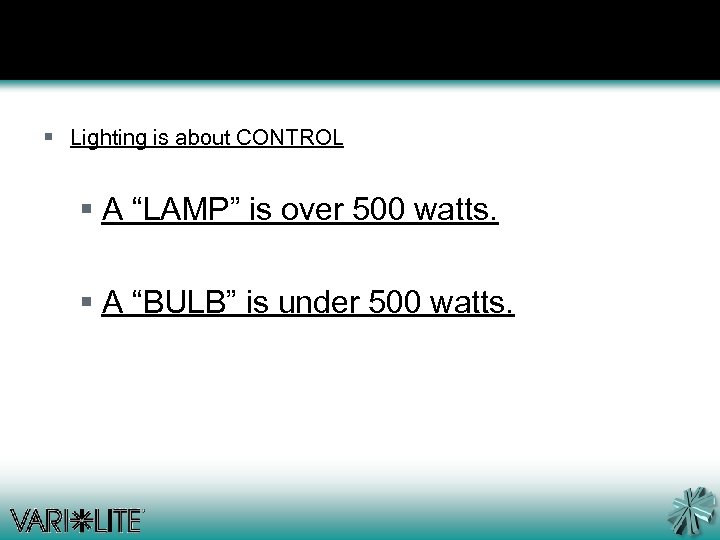
§ Lighting is about CONTROL § A “LAMP” is over 500 watts. § A “BULB” is under 500 watts.

§ Lamps project in a sphere § Trap the light in a box with an open end on one side § but loose the light in the cabin § Reflectors: so you can point the light and not loose any power

§ SPREAD § How much area the light covers § Think of a spotlight as opposed to a floodlight § INVERSE SQUARE LAW: § If you double the distance, you get ¼ of the power. § The higher or further away the light is, the wider the spread, but the weaker the light § True to lighting and sound

§ Ellipsoidal (or Leko) § § Narrow spread Internal shutters Far Throw Hard edge § Fresnel (FER-NELL) § § Wide spread Attachable shutters Short throw Soft Edge
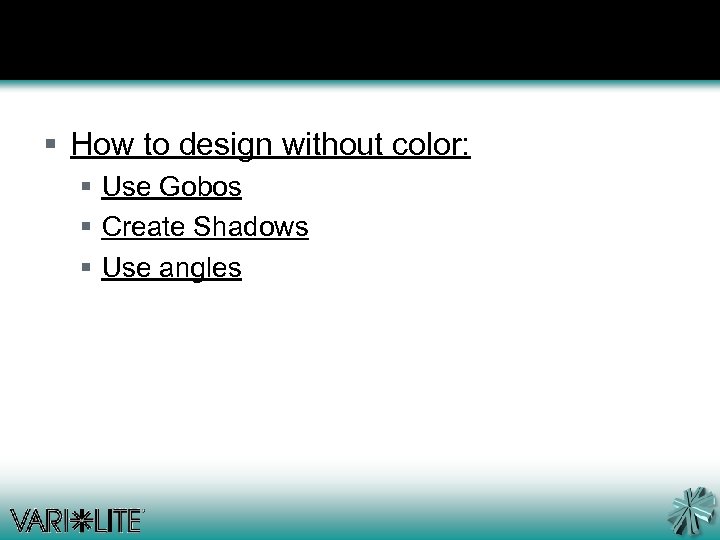
§ How to design without color: § Use Gobos § Create Shadows § Use angles

When creating a light plot, remember… 1. Don’t light the floor- light the person’s head! 2. When a circle hits an angle, it’s no longer a circle 3. 8’ X 10’ is the maximum amount of coverage to expect from one light. § If the proscenium is 40’, it will take at least 4 lights

4. Contrast is Important § Across a football field at night with one match lit, you probably can tell who it is. It all the lights are lit, you could not § Don’t just keep adding more and more light- you will end up washing people out 5. MODELING: Creating 3 dimensionality- requires SHADOWS 1. If you only light from the front, you will get no shadow 2. THE SHADOW IS JUST AS IMPORTANT AS THE LIGHT 6. Use the Electrics (lights above stage) rather than FOH (lights on Catwalk) as much as possible

7. DECIDE WHAT YOU WANT TO DO FIRST, THEN DO IT. 1. Want to make a character look like an awful person, do it! 2. THEEEEENNNNN…. 8. Create your light plot! 1. Divide the stage into areas 1. Usually want at least 12 2. Think of where events in the play take place, set pieces, etc. 2. Start from the sides or the back first.

When writing cues for a show… § Come to rehearsals first § Watch the actors § Watch the blocking § Use what you find § Alternative Silence § If you don’t use something for the whole play, then suddenly use it, it draws attention § Always write the cue from Black, not from the last cue § Finnesse your cues § If going from 30% to 100%, give the audience time to adjust § Watch- There’s always more you can do § You can never finish a show.
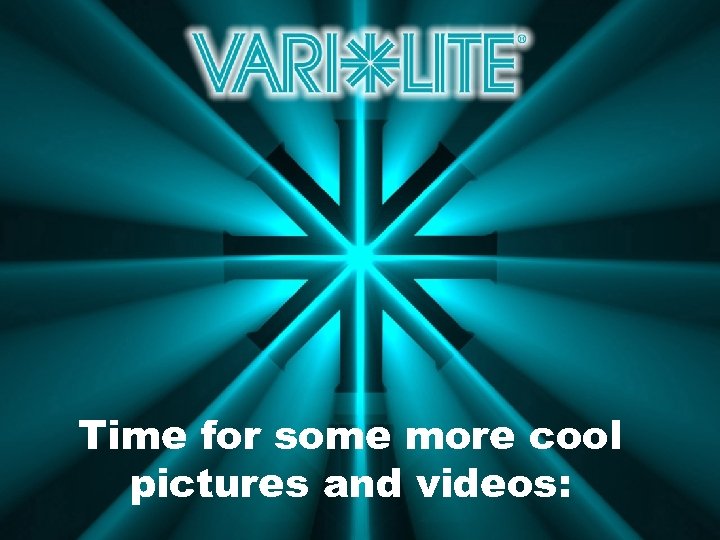
Time for some more cool pictures and videos:
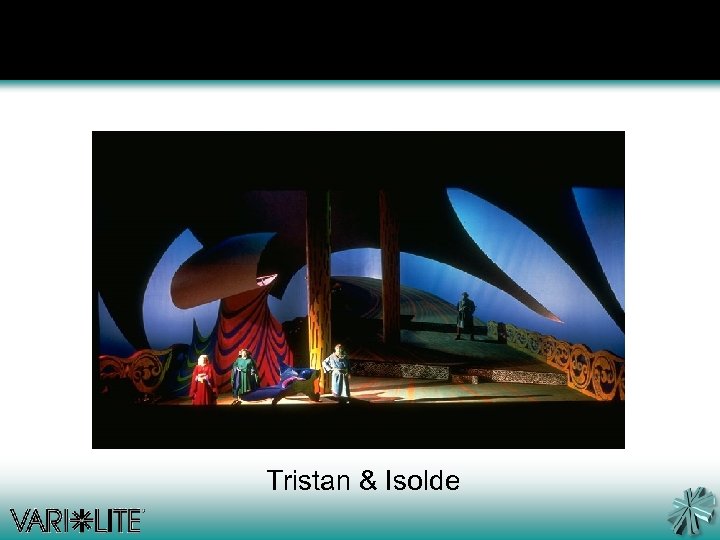
Tristan & Isolde
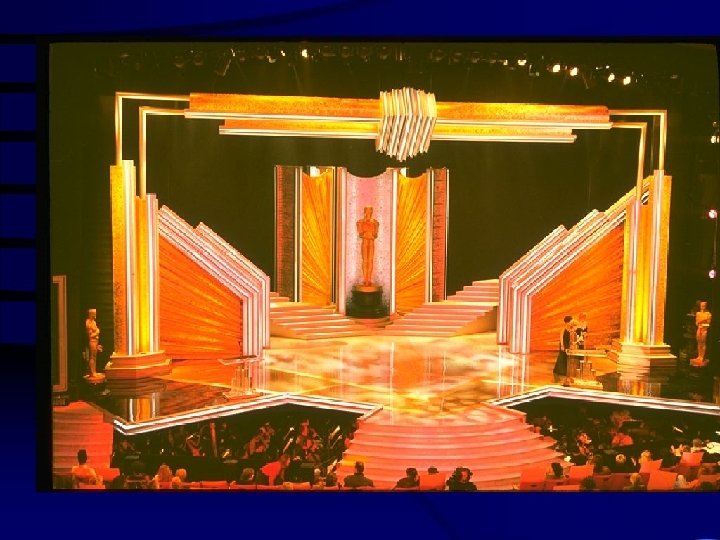
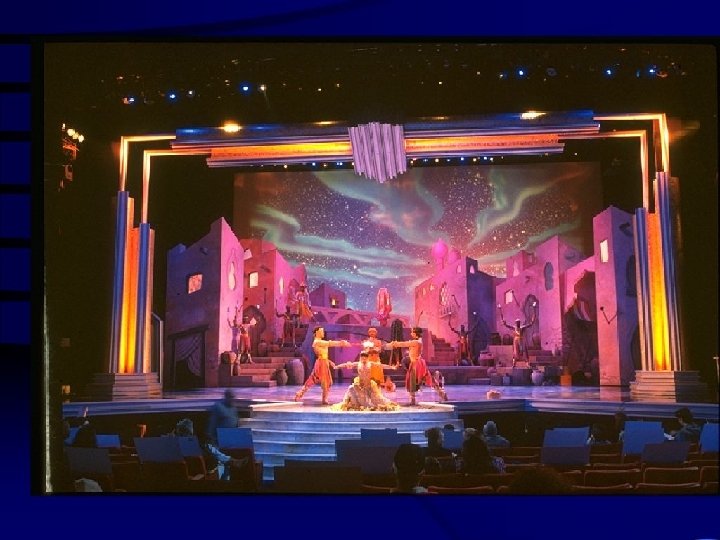
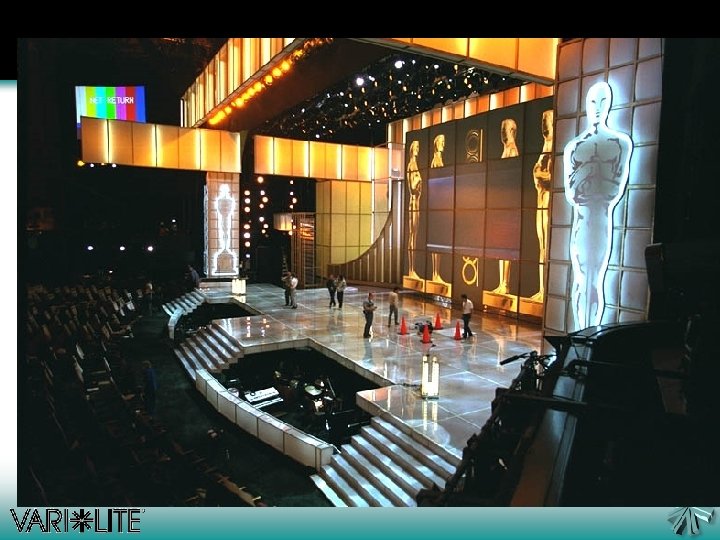
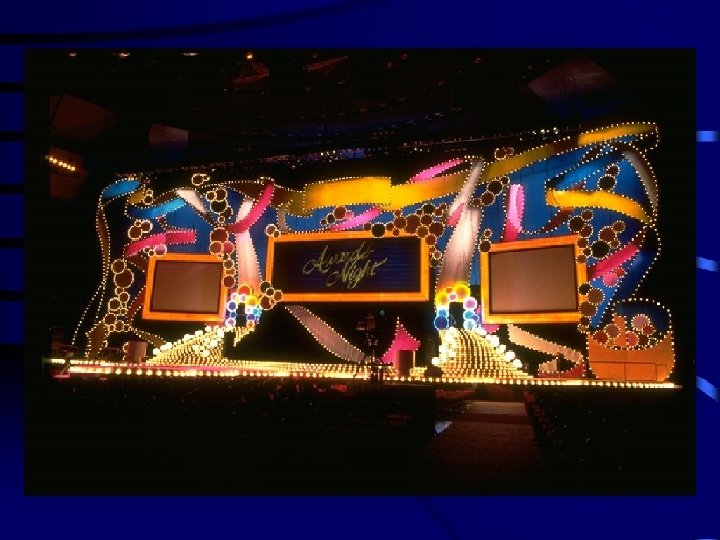
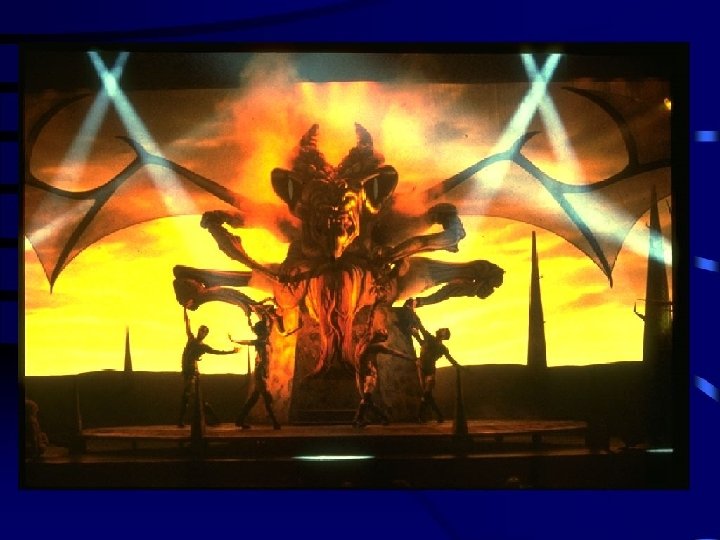
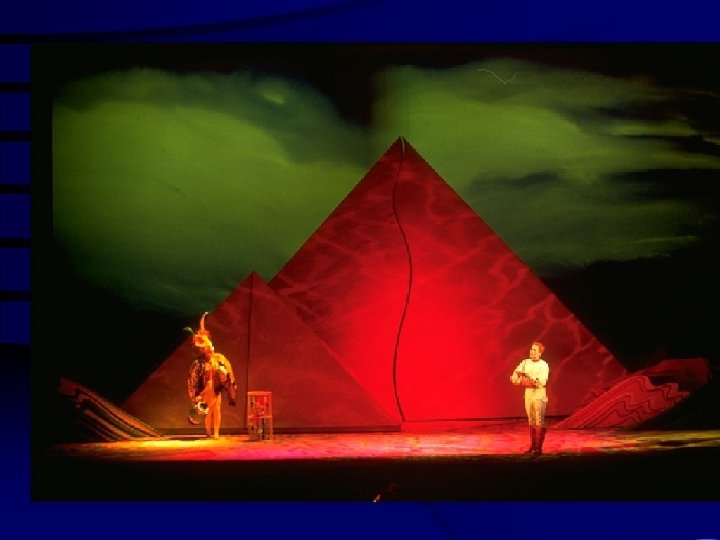

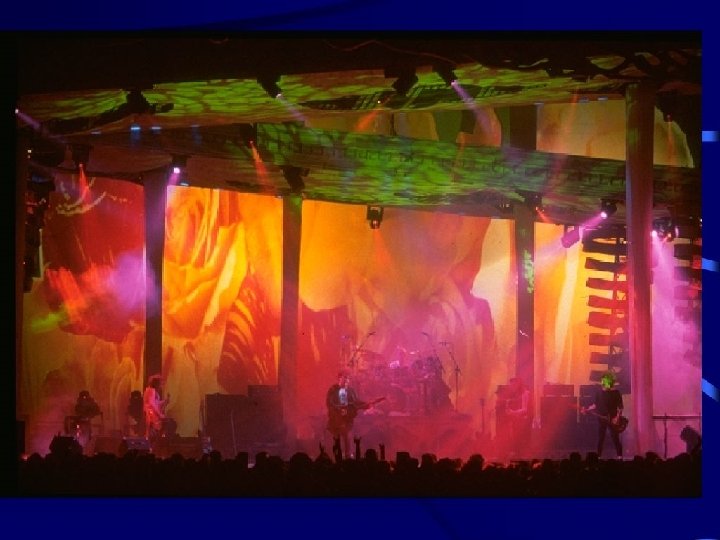
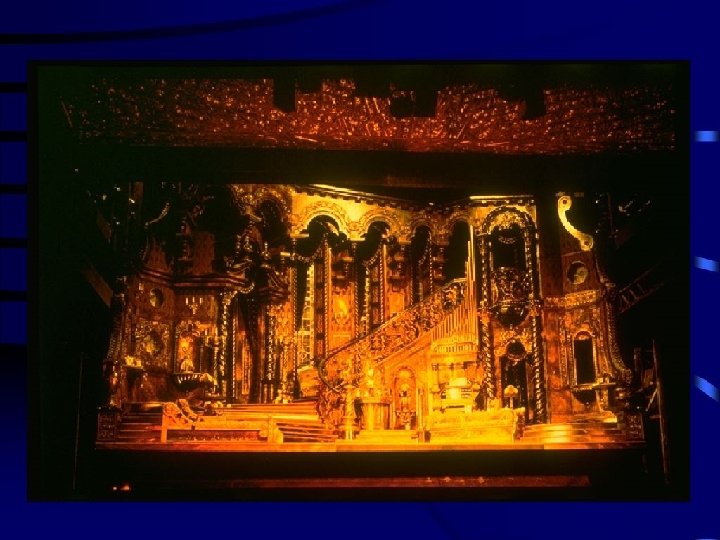
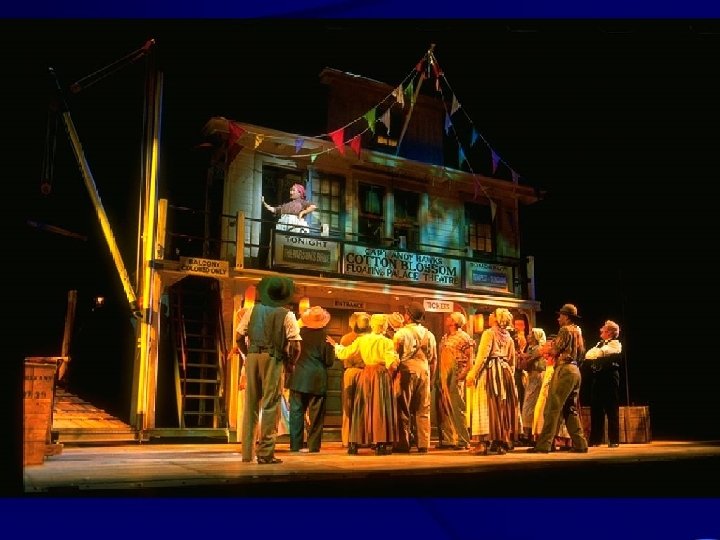

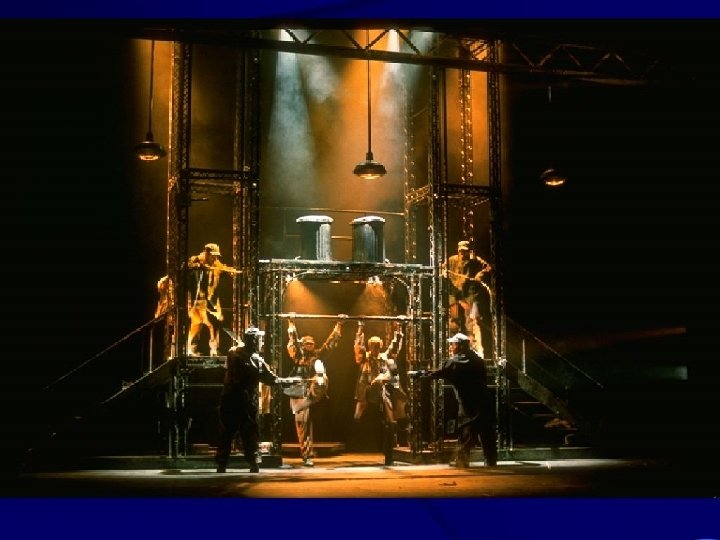
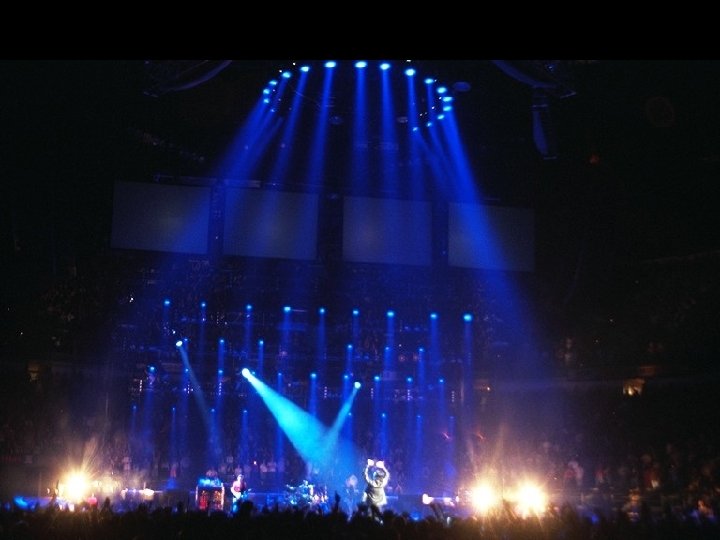
5e258fd5139e4229f57eb1a5f7ce9adc.ppt